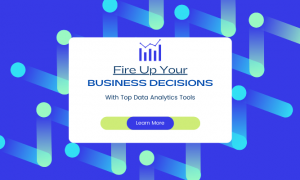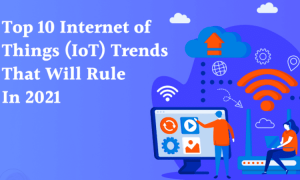This article is about the latest trends in Big Data and Analytics techniques that have dominated this area in 2020 and will continue to leave its mark in the near future too.
Yuval Noah Harari in 2016 said in his book Homo Deus: A Brief History of Tomorrow, “Dataism is a new ethical system that says, yes, humans were special and important because up until now they were the most sophisticated data processing system in the universe, but this is no longer the case.”
See more: Key Events in The History of data Analysis
Dataism provides the logical basis on which the entire edifice of Big Data Analytics and surveillance capitalism is built. While social scientists have created much hue and cry over dataism, it has proved to be nothing, but a paradise for capitalistic ventures and philanthropic purposes.
It is a technology which is still emerging and with each new emergence, the world is becoming an enhanced place to live in. We’ll here see how Big Data and Analytics is playing their role in affecting the dynamics of the changing world.
What Are The Trends in Big Data and Analytics?
Wide Data
Big Data is a cub and Wide Data is a lion. Noticed the difference? Data companies knew it long before you could notice, therefore they currently are putting efforts into wide data instead of big data.
Know more: 3 Factors Shaping the Future of Big data
The myth of invincibility regarding big data has been broken with the development of big data handling technologies like Hudoop, Cassandra, and MangoDB next one in the row is the wide data.
The wide data is highly distributed, varied, and fragmented as it is gathered from a disparate range of sources. It is made uniform by the data wrangling techniques and then performed data mining on to get more comprehensive and multifaceted information on users and user behavior than we can get from big data.
Continuous Intelligence
It is the automated and continuous process of deriving the business value out of all the data present including real-time analytics. It is the mother of business intelligence as it is the name of continuously feeding the business with better insights and hidden information.
With the help of information provided to the business, business owners adjust their policies and take adaptable actions accordingly.
IoT Big Data Analytics
Internet of Things and Big Data share a strong bond and affect each other to a great extent. The growth of IOT has set the scene for Big Analytics clear and increased its performance capabilities.
The data companies are working on IoT Big Data Analytics day and night, therefore. Big Data Analytics is a driving tool in getting better insight through Hadoop, Spark, etc. into IoT generated unstructured data hence maximizing the return on investment of manufacturing, transportation, and other product and service based businesses.
IoT Big Data Analytics, if applied in e-health systems have the potential to save this world from any new pandemic. IOT and Big Data Analytics combined together are striving towards self-service analytics. The cutting-edge technology is another convergent point between the two as both of them enable real-time and on-demand actions.
Know more: How IoT is Going to Impact Cybersecurity?
Data Stories Have Replaced Dashboards
The pre-defined and static dashboards provide limited insight into the data. Plato once said “Those who tell stories rule the society” and data analytics tools got it covered.
The data stories present the real-time analytics, business strategy, key business indicators, and business narrative on a single screen. It narrates the entire story rather than telling in bits and pieces, as was the case in the dashboard.
In-memory Computing
The continuously falling prices of memory chips have led to better utilization of them for storing the data on the main RAM of the dedicated server rather than storing it in the relational data bases of low memory devices.
One such technology HANA developed by SAP uses sophisticated data compression to store the data in RAM. It is faster because it can cache countless amounts of data countlessly, store session data, and can perform complex event processing.
In-memory computing is cheap as well as 10,000 times faster than standard disks, so more and more businesses are lurking to it.
Metadata is Equally Important
Shazaam, originally an IOS application used the unique digital fingerprint to identify the song being played on the phone from the application’s database to provide the metadata of the song.
Shazaming the data is a new challenge for data scientists. They are aimed at developing the algorithms that will assist the analytical system in identifying the data patterns or anomalies. The greater the metadata, the quicker will be decision making.
Read more: career move into data science
It will help not only finding more insights and Metadata of the analytics, but also produce new alternative input technologies and make the data of an enterprise consistent.
X-Analytics
An umbrella term used by Gartner for unstructured data contents like audio analytics, video analytics, and text analytics. This term has been coined regarding the services artificial intelligence has done for better disaster management during COVID-19 pandemic after analyzing zettabytes and yottabytes of different data contents like audio, video, and text analytics.
Gartner has suggested it can be used in solving high-risk threats imposed on humanity like climate change, the meteor hitting earth, and tsunami flooding human population areas.
Summing Up:
The ambit of Big Data and Analytics is also big. Its further implications are blockchain in Data and Analytics, the rise of data marketplaces, public cloud services, decision intelligence, and responsible Artificial Intelligence. The sole purpose of the Big Data and Analytics should be aligned with what Sir Yuval Noah Herari has prophesized at the starting.
Author Bio: Rabia Malik, an SEO content writer at CodingPixel bibliophile, and scribbler. Passionate about Big Data and Analytics. Likes to scribble about emerging technologies and techniques.






Leave a comment